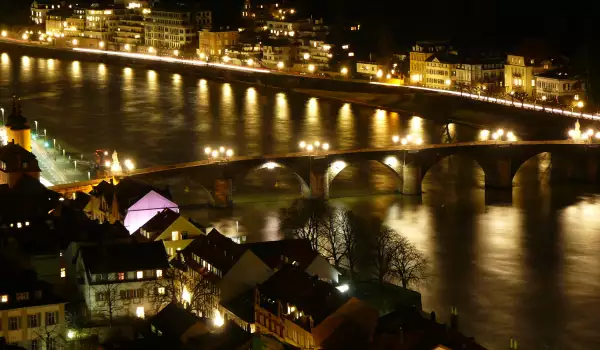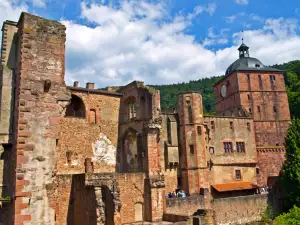Heidelberg

Heidelberg is a remarkable German city. It is known for its incredibly authentic, beautiful and completely preserved baroque old town and the oldest university in Germany and is generally one of the oldest in Europe. There are lots of cultural and historical sights in Heidelberg, which are reminiscent of different ages and make this city one of the most visited destinations in Germany and Western Europe. About 3 million tourists annually from around the world visit Heidelberg, to enjoy its authentic baroque architecture, and simultaneously see the modern face.
Heidelberg is located in the lower reaches of the navigable Neckar River, which runs through the southwestern part of Germany. Neckar crosses Heidelberg from east to west and flows 22 km away from it in the Rhine.

The city stands in the northwestern part of the federal state of Baden-Württemberg, between the cities of Frankfurt and Stuttgart. The city is surrounded to the east by the peaks Königstuhl of 568 m, Gaisberg 375 m and Heiligenberg of 445 m high. Heidelberg extends over an area of 108, 83 square kilometers and there are about 150 000 people living there.
For the first time Heidelberg was mentioned in the charter of the monastery of Shonau in 1196, but this story bears traces of the Celts, Alemanno, Franks and Romans well before that. For centuries it was the capital of the princes of Kurpfalz.
During this time the city experienced its five centuries of prosperity. There in 1386 is established the first university in Germany. During the war, romantic Heidelberg was destroyed several times by French troops to be raised again in the Baroque. In 1720 the residence of the princes of Kurpfalz was moved to Mannheim.

In 1803 Heidelberg was part of the Grand Duchy of Baden. In 19th century, philosophers create a city of poets and then began the development of a university center. Unlike most German cities, Heidelberg was hardly damaged during World War II. After the war there was the headquarters of U.S. ground forces in Europe.
Heidelberg Castle rises majestically with its glare in pastel colors between the old neighborhoods of the city and hills. Today it is undoubtedly one of the biggest tourist attractions of the city. The architecture of the castle in Heidelberg is a strange mix of styles and ages between 13th and 17th century, the main part of the palace was built in the spirit of the German Renaissance. For the first time it was mentioned in 1225 and was built at various stages. In its present form it bears the marks of several architectural periods and was a principal residence of the princes of Kurpfalz.
After Carl Philip in 1720, primarily on the basis of disagreement with the prevailing community, Heidelberg moved the capital in the newly founded Mannheim palace but ceased to perform official functions. Today the castle in Heidelberg is an attractive place for tourists from around the world. There are two ways to get to the palace. One is using the lift that goes from the old town and the other on foot through the narrow, scenic path along the slope.
Heidelberg University was founded in 1386 and is one of the oldest in Europe. The fame of Heidelberg as a university center is in the field of medical and natural sciences. Heidelberg University was founded by Ruprecht I, Prince of the Palatinate and the area of Grand Duke Karl Friedrich of Baden, to whom, and in fact is named after.










